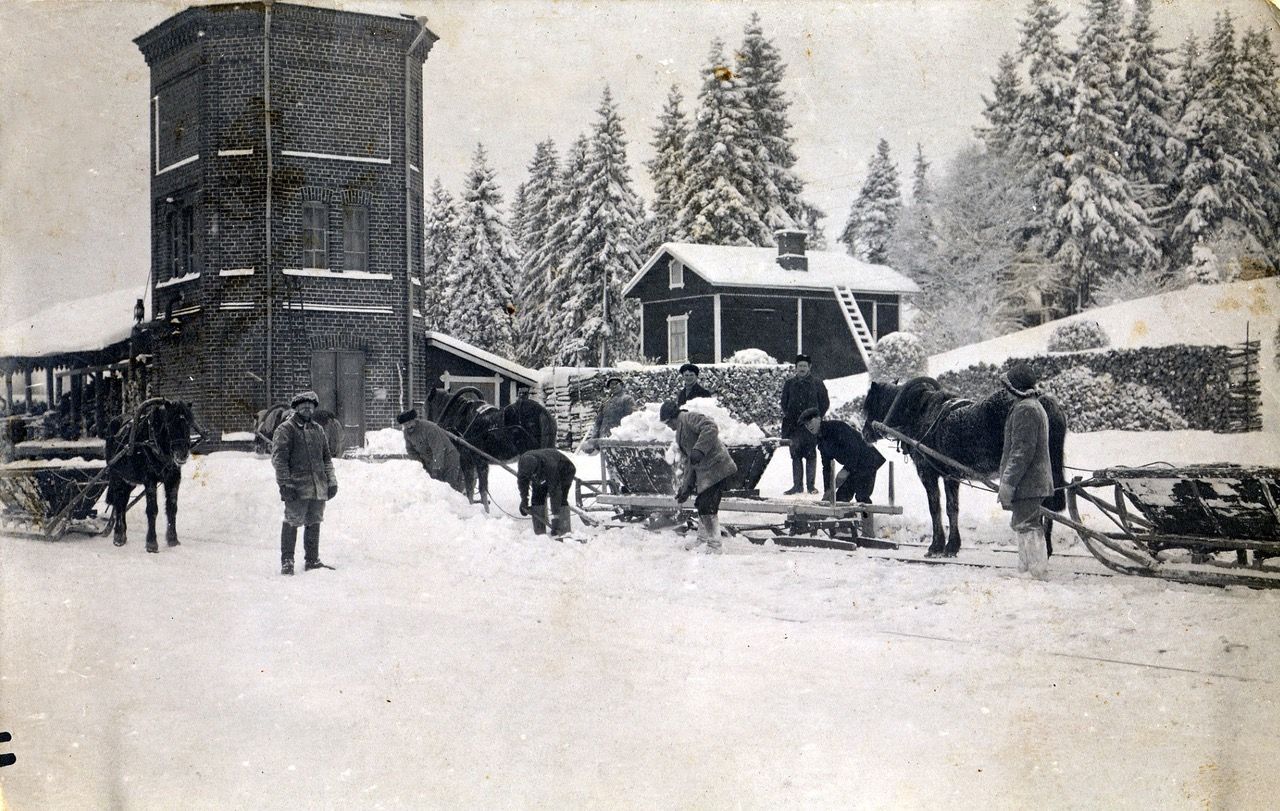
History
The railway connection between St. Petersburg and Helsinki opened in 1870 spurring the rapid development of the industrial world for the remote village of Pulsa. The location chosen for the station was likely due to the already busy road connecting Lappeenranta to Säkkijärvi.
State railway architect Knut Nylander designed a handsome building decorated with wood carvings surrounded by parklands.
Circa 1870-1885, Pulsa was now considered the main railway station of Lappeenranta and the entire Saimaa region. A place where travellers could connect to the world.
For example Paris:
Travellers from Lieksa or Kuopio could ferry to Lappeenranta by boat. Upon arrival take a 20 KM journey by horse and chariot. There they would board a train at the Pulsa Railway station bound for Paris.
At the end of the 19th century and the beginning of the 20th century, Pulsa was in its heyday. In addition to the Punkkinen’s storehouse, there were two other shops in Pulsa, Kaiko's shop along Säkkijärvi road and Osuuskauppa Yhtymä at the intersection of the station road. There was a post office and its local bank, Pulsan Osuuskassa. Flowers and fruits were cultivated in Pulsa’s court; furs were obtained from its fox farm. The folk school founded in 1899 was able to contribute to the community. Recreation was sought at Lavan mäeltä, where there was a sports field and a dance stage.
The well-known Golden Age painting "Mother" was created at Pulsa station. Pulsa inspired Elin Danielson-Gambogi (1861–1919) to paint one of his most famous works. Danielson-Gambogi was one of the leading visual artists during the golden age of Finnish art. Whilst studying in Paris, he was impressed by the naturalistic trend and depicted various light effects in his works skillfully. The artist's sister and her child were the models for the painting Mother (1893), one of Danielson-Gambogi’ most famous works. In the painting, Sister Tytty is breastfeeding her firstborn, Paavo. It was painted at Pulsa station, where the artist lived for long periods with his sister in 1893-1894.
Pulsa and Pulsa's station gradually became silent in the 1950s. Technology improved the efficiency of the station and steam locomotives were removed once their important refuelling requirements were no longer necessary. The Luumäki-Lappeenranta straight line completed in the 1960s took passenger traffic from Pulsa and finally the last railway employee left the station in 1985. The station village gradually emptied and seemed to be destroyed.
Pulsan Hoitokoti ry became the saviour. It started its activities to help alcoholics, which proved to be quite effective. The association offered accommodation, maintenance and other know-how to its clients suffering from their problems. Tenants would also assist in renovating the buildings. However, the operation of the nursing home ended in 2013 and the station became empty again.
Petra and Lasse Karjalainen moved to Pulsa in the spring of 2014. They noted the risk of destruction of the empty station village. All the good that had been reasonably extracted was gone. Debris from emptying the buildings was found everywhere as the bushes grew wild and rampant. But the houses were still in fairly good condition in terms of their basic structure. Petra and Lasse Karjalainen would not have needed Pulsa's station village, but the village seemed to need them and deals were made at a rapid pace.
That started a seemingly endless renovation project. Petra is a Swiss interior designer and has previous experience in areas such as Joensuu in Eastern Finland, where she conceived and implemented Taitokortteli, which has developed into the city's most significant tourist attraction. Lasse is originally from Pulsa. He had worked as a business consultant for decades. Lasse was very familiar with the station from childhood. He went to school in Lättähattu for eight years, at that time taking the local train from Pulsa station in Lappeenranta.
Now almost 20 buildings have been renovated: the station building, old railwaymen's apartments, saunas, cellars, outhouses, sheds, storage buildings and yard and park areas.
The work continues.